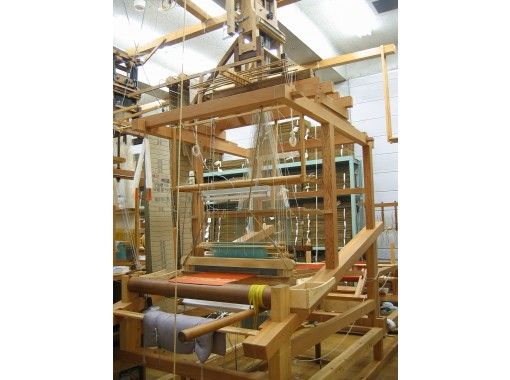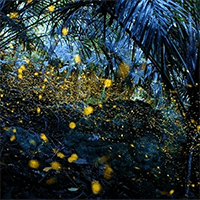Things to do in Kinkakuji/Kitano-tenmangu Area
Tenmangu Kitano Sugawara public which has been popular as a God of learning has been enshrined, the examination and employment activities, is popular as a place to pass pray as there is a divine favor for each test. The precinct, a number of cattle of the image, or better the head and stroking the cattle, has been with the disease is cured. In the spring, it is the precincts bloom is also of plum blossoms 1500, show us a view of the masterpiece. Ji historic was built in the Kamakura period is also referred to as the Golden Pavilion from Kinkaku of luxurious of the three-layer structure, high popularity from its luxurious appearance, has been known to Kyoto as a representative tourist spot. Arashiyama and is visited easy to spot because to go by bus from Gion. In this area, dressing and tea ceremony experiences, such as Me Yuzen, traditional crafts There is a wealth of activities that can be experience.
- Age 1~Age 70
- Over 6 hours on the day
- 08:40 / 09:50
Board and disembark at the meeting point08:40▼Nihonbashi Station, Exit 2 (Namba-Shinsaibashi area)09:50▼Kyoto Station, Hachijo Exit (in front of 7-Eleven)10:30▼Kinkaku-ji Temple (approx. 40 mins)Visiting fees are at the customer's expense.12:00▼Kiyomizu-dera Temple area (individuals will visit, stroll freely, and have lunch on their own / approx. 3.5 hours)15:30▼Fushimi Inari Taisha Shrine (approx. 70 mins)17:00▼After a fun end to the day's itinerary, start heading back.19:00▼Shinsaibashi, Dotonbori area (free stroll / approx. 1 hour)
- Age 4~Age 100
- 1~2 hours
- 10:00 / 11:00 / 12:00 / 13:00 / 14:00 / 15:00 / 16:00
In this plan, you can choose your favorite from M course, T-shirt (90 – XXXL), tote bag (medium size), and the whole process of Japanese traditional craft "Roketsu dyeing" "Dyeing and drying from drawing" You will experience "until". No need for painting, even children are OK! !! A locust dyeing craftsman will carefully guide you. Choose from many sketches and combine them. Also, the original design is OK. Trace the sketch using a brush with wax, then put on boots, apron, and gloves and dye it yourself. After dyeing, remove the wax you drew and you're done. The part drawn with wax remains white as the original fabric without being dyed, and you can easily create simple and deep works dyed with wax, such as shades due to the thickness of the wax and crack patterns due to wax cracks. The work is completed in about 90 to 120 minutes and you can take it home on the day. ~ Flow of the day ~ ① There are many sketches available, so you can choose your favorite sketch from them. The original design is also OK ② Once the sketch is decided, trace the sketch using a brush with wax. Draw a rough sketch with the heated wax included in the brush. ③ Dye the cotton cloth with the sketch drawn with wax in the dye. Please enjoy the dyeing experience by yourself. ④ Soaping work: Put the dyed cotton cloth in a kettle with boiling water and remove only the wax from the cloth. ⑤ Wash the cotton cloth from which the wax has been removed, dehydrate it with a dehydrator, and then dry it. ⑥ You can take home the finished work on the day. Please take home your precious memories in Kyoto.
できるかなぁ〜と半信半疑で考えた下絵が、結構良い風合いで出来上がったので満足でした。結構作業が大変かと思いましたが、ご主人さんとお母さんのご協力もあり、お手軽に体験させてもらうことができました。今度は友人に紹介しようと思います。
- Age 4~Age 100
- 1~2 hours
- 10:00 / 11:00 / 12:00 / 13:00 / 14:00 / 15:00 / 16:00
In this plan, you can choose your favorite from M course, tenugui (35cmx98cm), tapestry (45cm x 90cm), goodwill (45cm x 90cm), and the whole process of Japanese traditional craft "Rouketsu dyeing" "Drawing a picture" From dyeing to drying ”. No need for painting, even children are OK! !! A locust dyeing craftsman will carefully guide you. Choose from many sketches and combine them. Also, the original design is OK. Trace the sketch using a brush with wax, then put on boots, apron, and gloves and dye it yourself. After dyeing, remove the wax you drew and you're done. The part drawn with wax remains white as the original fabric without being dyed, and you can easily create simple and deep works dyed with wax, such as shades due to the thickness of the wax and crack patterns due to wax cracks. The work is completed in about 90 to 120 minutes and you can take it home on the day. ~ Flow of the day ~ ① There are many sketches available, so you can choose your favorite sketch from them. The original design is also OK ② Once the sketch is decided, trace the sketch using a brush with wax. Draw a rough sketch with the heated wax included in the brush. ③ Dye the cotton cloth with the sketch drawn with wax in the dye. Please enjoy the dyeing experience by yourself. ④ Soaping work: Put the dyed cotton cloth in a kettle with boiling water and remove only the wax from the cloth. ⑤ Wash the cotton cloth from which the wax has been removed, dehydrate it with a dehydrator, and then dry it. ⑥ You can take home the finished work on the day. Please take home your precious memories in Kyoto.
- Age 7~Age 100
- 1~2 hours /2~3 hours
- 10:00 / 13:30 / 15:30
This is an approximately 1.5 hour plan where you will experience weaving a 10cm square silk fabric and tour the workshop. You can take your completed work home on the day. Everyone from elementary school students to the elderly can easily weave. Please feel the "texture" of the fabric you have woven yourself. You can see and touch some of Japan's finest works of art, which are world-class, and have a valuable experience learning about their history. *Bonus: Take photos on a restored high aircraft. An original postcard will be presented. You can also go shopping. We have three looms available for the weaving experience. For groups of 4 or more, orders will be given.
初めての機織り体験でした。なかなか機織りが出来る所は少ないのでオススメです。好きな色の糸を選ぶことが出来ました。他にも体験だけでなく歴史や京都の職人さんのお話などとても興味深いお話もして下さいました。英語で説明もあるので外国人の方も来られていました。
- Age 13~Age 100
- 2~3 hours /3~4 hours
- 10:00 / 13:30
It is a plan of about 3 hours to experience weaving about 18cm square foil fabric and to visit the workshop. The completed work is On the day You can take it home. Weaving is easy. Please experience the technique of the weaver. You can see and touch the world's best artworks in Japan, and have a valuable experience of knowing history. * Bonus: Take a picture on a restored high aircraft. Original postcard presentation. You can also shop. One weaving machine for the weaving experience is available.
丁寧にご指導いただき、2時間程でなんとか出来上がりました。最初はどうなるかと思いましたが、だんだん慣れてきて楽しくなりあっという間に終わってしまいました。詳しく説明しながら素敵な作品をたくさん見せていただきました。ありがとうございました。
- Age 7~Age 100
- 1~2 hours /2~3 hours
- 10:00 / 13:30 / 15:30
This is a 2-hour plan that includes an experience of weaving a 18cm square brocade silk fabric and a tour of the workshop. You can take your completed work home on the day. Everyone from elementary school students to the elderly can easily weave. Please feel the "texture" of the fabric you have woven yourself. You can see and touch some of Japan's finest works of art, which are world-class, and have a valuable experience learning about their history. *Bonus: Take photos on a restored high aircraft. An original postcard will be presented. You can also go shopping. We have one loom available for you to experience weaving. For 2 or more people, order will be given.
機織りは初めてでしたが、想像以上に楽しく贅沢な時間でした。織物に興味のある方に是非オススメします。 最初に織物や作品の説明をして下さいましたが、伝統文化の奥深さを知り、目の前の織物の見方もガラリとと変わりました。職人さんが実際に作業をしていらっしゃるところも見学させていただいたり、『本物』を間近で見た時に湧き上がった感動は貴重な経験でした。
- Age 4~Age 100
- 1~2 hours
- 10:00 / 11:00 / 12:00 / 13:00 / 14:00 / 15:00 / 16:00
In this plan, you can choose your favorite from S course, square size (45cm x 45cm, place mat (32cm x 45cm), tote bag (S size)), and the whole process of Japanese traditional craft "Rocket dyeing" "Draw a picture" You will experience "From things to dyeing and drying". No need for painting. Children are OK! The placemat dyeing craftsman will carefully guide you. Choose from many sketches and combine them. Also, the original design is OK. After tracing the sketch, put on boots, an apron, and gloves and dye it by yourself. After dyeing, remove the drawn wax. You can easily make a simple and deep work dyed with a placemat such as a crack pattern. The work is completed in about 90 to 120 minutes and you can take it home on the day. You can choose your favorite sketch. You can also use the original design. ② Once you have decided on the sketch, trace the sketch with a brush with a wax. ③ Draw the sketch with the heated and melted wax in the brush. ③ Draw the sketch with the wax. Dye the drawn cotton fabric by immersing it in dye. Enjoy the dyeing experience by yourself. ④ Soaping work: Put the dyed cotton fabric in a kettle boiled in boiling water and remove only the wax of the fabric. ⑤ Wash the cotton cloth from which the wax has been removed, dehydrate it with a dehydrator, and then dry it. ⑥ You can take the finished work home on the day. Please bring back your precious memories in Kyoto.
They taught us patiently and diligently so it’s really recommended for beginners too. There are many design that we can chose from, you can be as creative as you can.
- Age 1~Age 70
- 5~6 hours
- 07:30
07:30-08:30: Pick-up/drop-off/transfer to hotel/private inn Hotels/private inns within the Osaka Loop Line 10:00 ▼ Kiyomizu-dera area (individual worship, free stroll, free lunch/approximately 3 hours) Recommended sightseeing course Course 1: Kiyomizu-dera (customer pays admission fee) - Ni-san-nen-zaka - Ishibe-koji - Gion·Hanami-koji-dori - Yasaka Shrine You can visit your favorite spots according to your stamina and time~Course 2: Kimono experience (Customers who are interested can wear a kimono and enjoy the old townscape and touring Kiyomizu-dera Temple. Let's take pictures of the wonderful moment.) (There are many kimono shops near Kiyomizu-dera Temple and Fushimi Inari Taisha Shrine. We recommend renting a kimono at a shop at Kiyomizu-dera Temple and returning it at a shop at Fushimi Inari Taisha Shrine. The fee is at the customer's expense.) 13:30 ▼ Fushimi Inari Taisha Shrine (individual visit and free stroll / about 70 minutes) 16:00 ▼ Nara Park (individual visit and free stroll / about 1.5 hours) "Deer and autumn leaves" interweave "Nara Park" The contrast between the autumn leaves and evergreen trees is vivid Recommended tourist spot [Todaiji Temple] (Admission fee is at the customer's expense.) Todaiji Temple was built during the Nara period. Nara is popular with tourists and once served as the capital of Japan. It is registered as a World Heritage Site as one of the "Cultural Monuments of Ancient Nara" by UNESCO. Todaiji Temple has eight national treasure buildings, 14 buildings with 24 national treasure Buddha statues, and nine other national treasures including paintings and books. The famous Great Buddha, the Great South Gate, the Kongorikishi statues, and the Hokkedo Hall, as well as the Buddha statues enshrined within, are all national treasures. There are very few places in Japan where you can see so many national treasures at once. Admission fee: Todaiji Temple Great Buddha Hall: 600 yen for adults (junior high school students and above), 300 yen for elementary school students; Great Buddha Hall and Todaiji Museum: 1000 yen for adults (junior high school students and above), 400 yen for elementary school students 17:30▼After a fun day of sightseeing, we start to head back. 18:30Shinsaibashi, Dotonbori area (Guests on the course that takes you to your hotel or guesthouse should wait for the shuttle bus. When the shuttle bus arrives, we will take you back to your hotel or guesthouse and the tour will end.)
- Age 1~Age 70
- 5~6 hours
- 08:40 / 09:50
Boarding and disembarking at the meeting point 08:40▼Nihonbashi Station Exit 2 (Namba-Shinsaibashi area) 09:50▼Kyoto Station Hachijo Exit (in front of 7-Eleven) 10:00▼Kiyomizu-dera area (individuals will visit the temple, stroll around freely, and have lunch at their leisure / approx. 3 hours) Recommended sightseeing course Course 1: Kiyomizu-dera Temple (customers are responsible for admission fees) - Ni-Sannenzaka - Ishibekoji - Gion·Hanamikoji-dori - Yasaka Shrine You can visit your favorite spots according to your stamina and time~Course 2: Kimono experience (Customers who are interested can wear a kimono and enjoy the old townscape and touring Kiyomizu-dera Temple. Let's take pictures of the wonderful moment.) (There are many kimono shops near Kiyomizu-dera Temple and Fushimi Inari Taisha Shrine. We recommend renting a kimono at a shop at Kiyomizu-dera Temple and returning it at a shop at Fushimi Inari Taisha Shrine. The fee is at the customer's expense.) 13:30 ▼ Fushimi Inari Taisha Shrine (individual visit and free stroll / about 70 minutes) 16:00 ▼ Nara Park (individual visit and free stroll / about 1.5 hours) "Deer and autumn leaves" interweave "Nara Park" The contrast between the autumn leaves and evergreen trees is vivid Recommended tourist spot [Todaiji Temple] (Admission fee is at the customer's expense.) Todaiji Temple was built during the Nara period. Nara is popular with tourists and once served as the capital of Japan. It is registered as a World Heritage Site as one of the "Cultural Monuments of Ancient Nara" by UNESCO. Todaiji Temple is home to eight national treasure buildings, 14 locations with 24 national treasure Buddha statues, and nine other national treasures including paintings and books. Famous sights such as the Great Buddha, the Great South Gate, and the Kongorikishi standing statues are all national treasures, as are the Hokkedo temple buildings and the Buddha statues enshrined within. There are very few places in Japan where you can see so many national treasures at once. Admission fees: Todaiji Temple Great Buddha Hall: Adults (junior high school students and above) 600 yen, elementary school students 300 yen; Great Buddha Hall and Todaiji Museum: Adults (junior high school students and above) 1000 yen, elementary school students 400 yen 17:30▼After a fun day of sightseeing, we start heading back. 18:30 Shinsaibashi, Dotonbori area (free time/approximately 1 hour)
- Age 4~Age 99
- Within 1 hour
- 11:45 / 13:00 / 14:15 / 15:30 / 16:45
Learn the spirit, history and manners of the tea ceremony and experience the tea ceremony. The feature is that customers can actually experience the tea ceremony as well as watch the show in front of the spot. Includes two dried sweets and light brown clothes. After the tea ceremony experience, you can also experience making matcha yourself.
コロナウイルスの影響で大変な中、1人でも受け入れてくださり色々丁寧に教えてくださいました。苦い抹茶しか飲んだことしかありませんでしたが、甘くてとても美味しかったです。身近に取り入れられるように、抹茶や煎茶の種類なども、機会があれば勉強してみようと思いました。
- Age 0~Age 99
- Within 1 hour
- 11:45 / 13:00 / 14:15 / 15:30 / 16:45
I will rent a tea room and learn the spirit, history and practice of the tea ceremony and experience the tea ceremony. Not only can you see the show before, but customers can actually experience the tea ceremony. Main sweets · Dense tea (can be changed to light tea) · Dry sweets · Light tea included. After experiencing the tea ceremony, you can experience Matcha by yourself.
- Age 0~Age 100
- 1~2 hours
- 10:00 / 13:30 / 15:30
We will guide you through the site of Koto Nishikori Studio, which produces traditional textiles at Kyoto. You can see Nishikiori's works, restored textiles, restored Takaki. Families, friends, those interested in textiles, school excursions, university seminars, lifelong learning, etc. can be enjoyed from children to seniors. Korin Nishikori Kobo is a workshop established by textile artist Korin Tatsumura. One postcard per person and a special photo taken with a precious high machine.
- Age 7~Age 100
- 1~2 hours /2~3 hours
- 10:00 / 13:30 / 15:30
This is a plan to experience making accessories using the world-famous Japanese art "Nishiki" and to visit the workshop. Choose one from earrings, pierced earrings, brooches, macaron straps, hair ties, and tie pins. You can take home the completed work on the day. You can also go shopping. Textiles used for accessories are available at the workshop. (It cannot be woven.)
- Age 5~Age 100
- 1~2 hours
- 13:00 / 15:00
This plan will take you to a traditional Japanese townhouse, "Machiya," and experience a flower arrangement lesson. First, after arriving, you will arrange flowers using seasonal flowers. After arranging the flowers, display your beautiful arrangement in front of the garden and take lots of wonderful photos. After that, you will be guided around the townhouse, which was built in the Meiji period. There are three storehouses and six small gardens, so you can feel the seasonal breeze. Feel free to take photos during your stay and fully experience Japanese culture.
- Age 0~Age 100
- 1~2 hours
- 13:00
This plan will take you to a traditional Japanese townhouse "Machiya" and participate in a tea ceremony in traditional costume in Kyoto. First, after arriving, you will be quickly dressed in a kimono made of real silk. After that, you will be guided around the townhouse built in the Meiji era. Listen to an explanation about the tea ceremony in the tea room and enjoy tea. You can experience the spirit of wabi-sabi as if you have traveled back in time to the Meiji era. Feel free to take photos during your stay and fully experience Japanese culture.
- Age 0~Age 100
- 1~2 hours
- 18:00
You can enjoy the fantastically lit up 140-year-old townhouse, a cultural asset. The townhouse is lit up in hopes of ending the COVID-19 pandemic. Handmade lights made with an abundance of Japanese materials, such as washi paper, wood, and sake barrels, warmly illuminate the six gardens. Please enjoy the illuminated townhouse (building and garden) to your heart's content. This course will serve you carefully prepared kaiseki cuisine. Enjoy delicious food along with the beautiful lighting.
- Age 0~Age 100
- 1~2 hours
- 11:00 / 13:00
A very popular traditional bento served at tea parties that has been passed down for about 100 years. Bento is a menu that has been passed down at Tomidaya for 100 years. A tour of the townhouse, which is a cultural property, is also included. We will show you around the 140-year-old townhouse "Tomitaya" in Nishijin, Kyoto. Tomidaya was designated as a nationally registered tangible cultural property in 1999, and as a ``Museum of Nishijin Life'', the building is open to the public and the customs of Nishijin, Kyoto are introduced. Machiya life has been shaped by unchanging prayers, wishes, and gratitude since ancient times. Tomidaya started out as a production wholesaler in Nishijin about 140 years ago. This building is built by mixing charcoal into the land and closing the demon gate with amulets and salt, and enshrines Kojin (the god of fire), Benten (the god of water), and Yaoyorozu gods. Masu. In addition, there is a treasure trove where the spirit of gratitude that the 11th generation received when he jumped into the fire and saved the deity during the great fire at Ise Jingu in the Meiji period is enshrined, and is used in daily life. We are here to show you the spirit of hospitality that lives on in the past, the spirit of valuing God, and the way people have lived through generations, such as drinking tea, dancing Noh, and valuing culture.
最近チェックしたプラン
Please wait a moment
![[Day trip | Pick-up from city hotels] Ancient Kyoto Japanese-style tour: Kinkaku-ji Temple - Kiyomizu-dera Temple - Fushimi Inari Taisha Shrineの画像](https://img.activityjapan.com/10/55487/10000005548701_P3BiVCAd_3.jpg?version=1722479342)
![[Kyoto/Nishikyogoku] Enjoy a 100% craftsmanship experience of traditional rocket dyeing! No need to draw, children are OK (T-shirt, tote bag)の画像](https://img.activityjapan.com/10/38536/10000003853601_qgB2j5KG_3.jpg?version=1631428867)
![[Kyoto/Nishikyogoku] Enjoy a 100% craftsmanship experience of traditional rocket dyeing! No need to draw, even children are OK (tenugui, tapestry, noren)の画像](https://img.activityjapan.com/10/38535/10000003853501_qgB2j5KG_3.jpg?version=1631428808)
![[Kyoto / Kita Ward] Weaving experience (plain weaving / hand weaving) & workshop tour / Experience the best Nishiki traditional fabrics, art and historyの画像](https://img.activityjapan.com/10/14026/10000001402601_IpdJM0ZF_3.jpg?version=1679460662)
![[Kyoto] Weaving experience-Experience weaving foil & visit the workshop-Experience the weaver's technique!の画像](https://img.activityjapan.com/10/21849/10000002184901_ODRrWm5O_3.jpg?version=1609211511)
![[Kyoto] Weaving experience-Weaving brocade (twill weaving) & workshop tour! Touch the best art and history!の画像](https://img.activityjapan.com/10/21786/10000002178601_wpKpIwpA_3.jpg?version=1679461863)
![[Kyoto / Saikyogoku] Enjoy the 100% craftsmanship experience of traditional rocket dyeing! No need to draw, even children are OK (square size, place mat, tote bag)の画像](https://img.activityjapan.com/10/38533/10000003853301_qgB2j5KG_3.jpg?version=1631428749)
![[13-person team/Pick-up from city hotels] Kyoto, Nara, Kiyomizu-dera Temple, Kimono experience, Yasaka Shrine, Fushimi Inari Taisha Shrine, Nara Parkの画像](https://img.activityjapan.com/10/55578/10000005557801_P3BiVCAd_3.jpg?version=1722496202)
![[Day Trip] Kyoto, Nara, Kiyomizu-dera Temple, Kimono Experience, Yasaka Shrine, Fushimi Inari Taisha Shrine, Nara Park, Todaiji Temple Day Trip (Departing from Osaka/Kyoto)の画像](https://img.activityjapan.com/10/55460/10000005546001_P3BiVCAd_3.jpg?version=1730786226)
![[Kyoto, Golden Pavilion] can be practiced not only a tour of the tea ceremony, "your Aiseki tea ceremony experience," a 1-minute walk from the Temple of the Golden Pavilionの画像](https://img.activityjapan.com/10/20585/10000002058501_1tltxr0S_3.jpg?version=1583719438)
![[Kyoto / Kinkakuji] "Chartered Tea Ceremony Experience" with main sweets, dark tea, dried sweets, and light tea 1 minute walk from Kinkakujiの画像](https://img.activityjapan.com/10/20586/10000002058601_1tltxr0S_3.jpg?version=1583719612)

![[Kyoto] Handmade accessories and a tour of the textile workshop at the longed-for "Nishikiori"の画像](https://img.activityjapan.com/10/14027/10000001402701_ODRrWm5O_3.jpg?version=1610608245)
![[Kyoto Nishijin] Tomidaya Flower Arrangement Experienceの画像](https://img.activityjapan.com/10/56323/10000005632301_PQKR0hle_3.JPG?version=1726808951)
![[Kyoto Nishijin] Tour a 140-year-old townhouse, try on a kimono and experience the tea ceremonyの画像](https://img.activityjapan.com/10/56320/10000005632001_PQKR0hle_3.JPG?version=1726822322)
![[Kyoto/Nishijin] Tomidaya Machiya Light-up Kaiseki Dinner [Includes Machiya Tour]の画像](https://img.activityjapan.com/10/36500/10000003650001_xyLMlfkE_3.jpg?version=1656039186)
![[Kyoto/Nishijin] You can enjoy a 100-year-old traditional lunch box at a townhouse where the gods live (with tour of the townhouse)の画像](https://img.activityjapan.com/10/51578/10000005157801_aIipu863_3.jpeg?version=1698287285)







